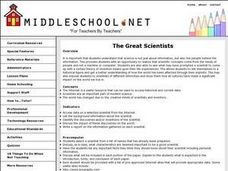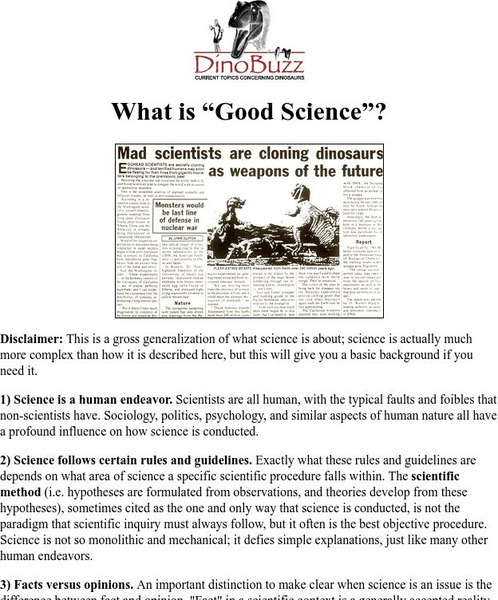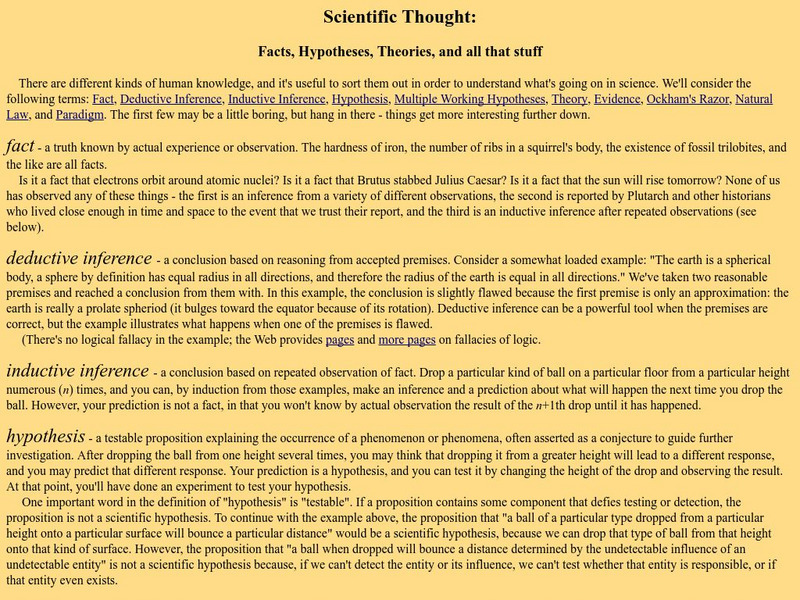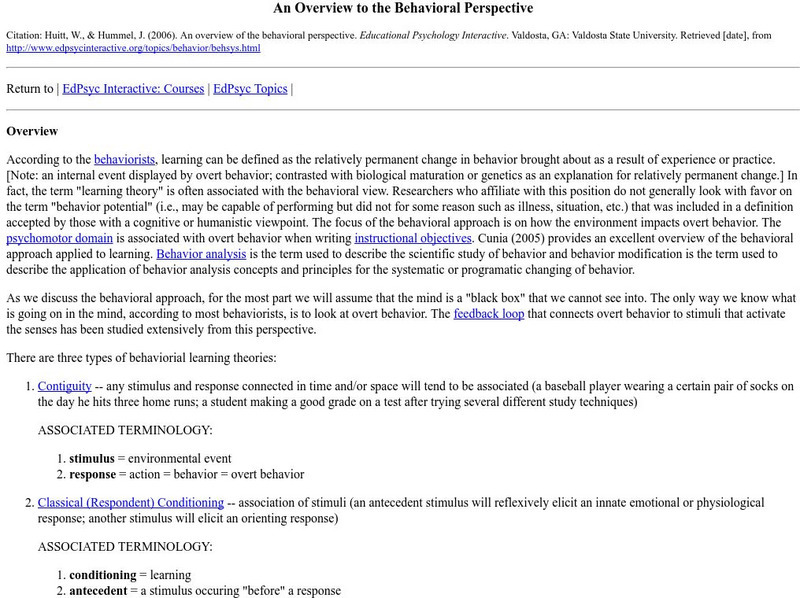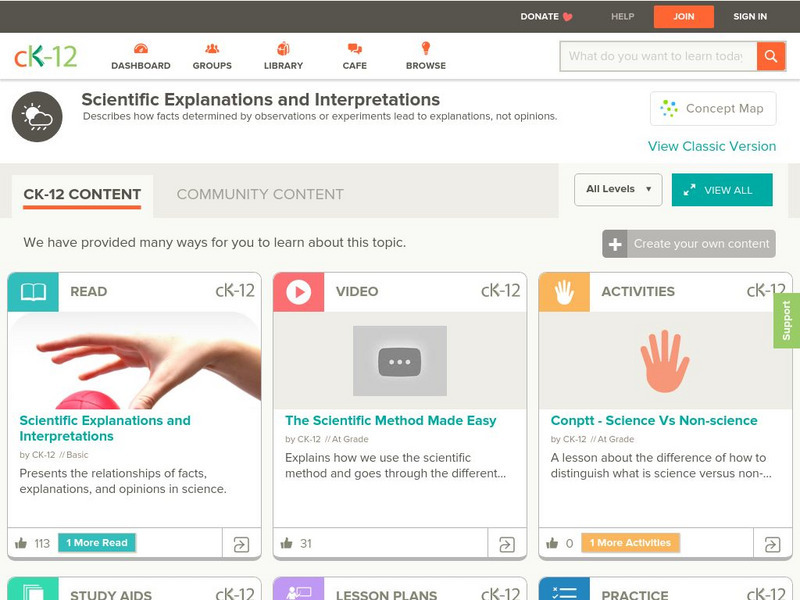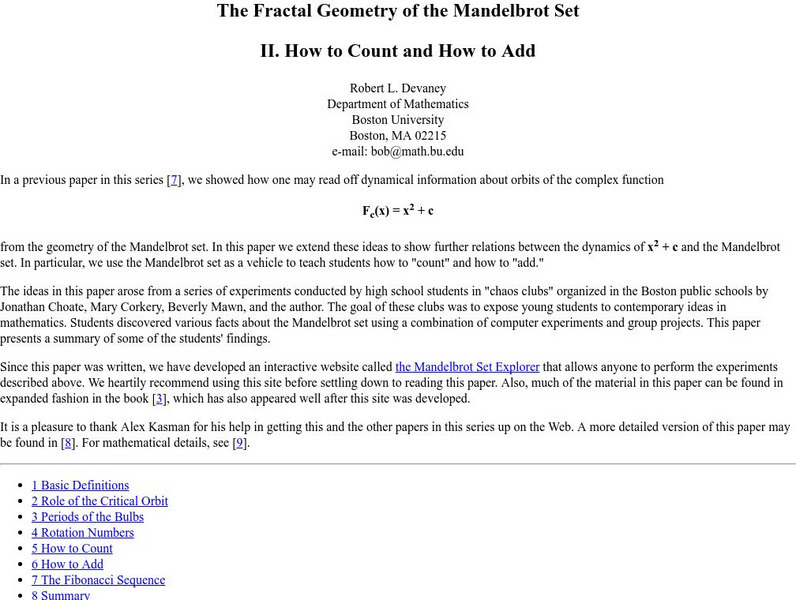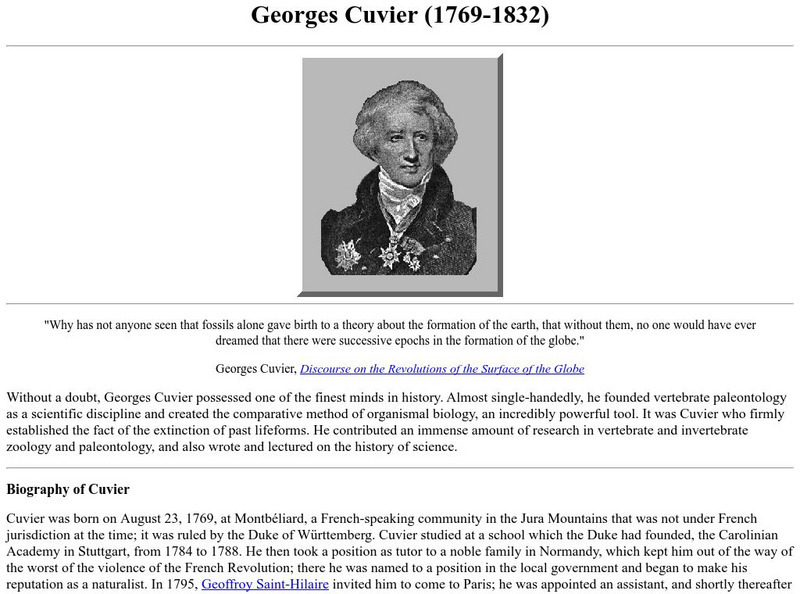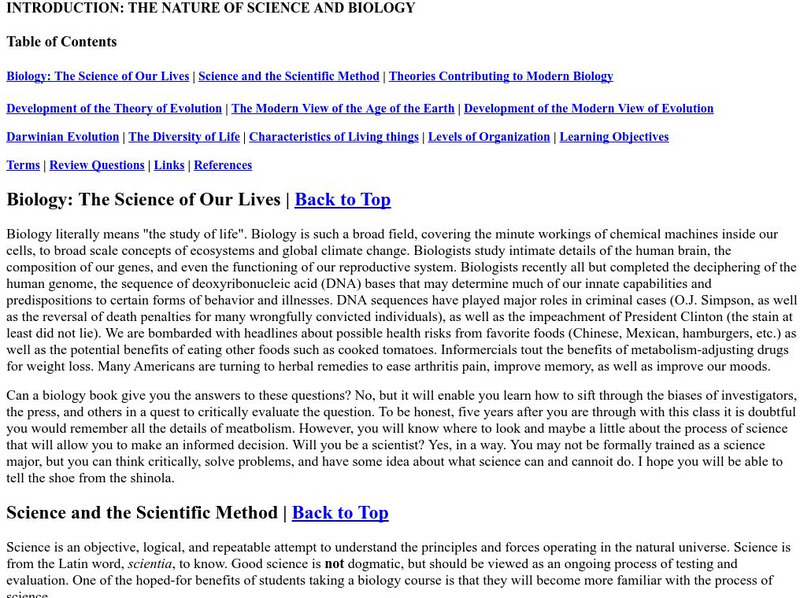Curated OER
Science Activity for Grades 4 - 8
Students use the scientific method and see the relationship between explanation and evidence as they investigate the effects of violence on young viewers.
Curated OER
Compiling and Weighing Evidence
In this evidence activity, students read about how scientific theories are developed and how evidence is gathered to support the theory. This activity has 2 graphic organizers and 2 short answer questions.
Curated OER
Practicing Scientific Literacy
In this science worksheet, students read an article that is scientifically based and decide how to respond to it. They respond to each of the statements listed using their article. Students also write a paragraph about one impact that...
Curated OER
Sedimentary Structures- An Adventure in Painting and Collage
Students identify and interpret concepts about how the Earth was formed and convey some of these ideas in a painting.
Students experiment with different types of paints and paint applicators to achieve a variety of visual textures....
Curated OER
The Great Scientists
Students discuss the characteristics of competent scientists. By researching selected scientists on the Internet, they gather and organize collected information into a cohesive paper.
University of California
Ucmp: What Is "Good Science"?
A very good explanation of the scientific process and the differences between science and non-science. This is a concise and clearly written description.
Hunkins Experiments
Hunkin's Experiments
This amazing website provides access to 200 exciting experiments from cartoonist, broadcaster, and engineer, Tim Hunkin. Each experiment is categorized and illustrated.
University of Georgia
University of Georgia: Scientific Thought: Facts, Hypotheses, Theories, Etc.
Provides explanations of terms used in science: fact, deductive inference, inductive inference, hypothesis, multiple working hypotheses, theory, evidence, Ockham's Razor, natural law, and paradigm.
Harvard University
Harvard Smithsonian: Everyday Classroom Tools
The focus of this series of lessons is to engage students in an exploration of the world around them. The emphasis is on inquiry as students learn about the earth, sun, light, shapes and more.
University of California
Understanding Science: Science at Multiple Levels
Describes how the process of science works the same whether at the microscopic level or over a long period time. Clearly explains what a theory and a hypothesis are, and what an over-arching theory is.
Other
Valdosta State: The Behavioral System
Excellent review of behavioral psychology. Presents the four types of behavioral theories in outline form. Has links to more details.
CK-12 Foundation
Ck 12: Scientific Explanations and Interpretations
[Free Registration/Login may be required to access all resource tools.] Students learn about scientific explanations and interpretations through instructional videos, grade-level texts, interactive activities, and quick assessments.
OpenStax
Open Stax: Physics: An Introduction
This interactive lesson introduces students to the branch of science known as physics.
PBS
Pbs: El Nino
You can link to the anatomy of El Nino, chasing El Nino, and El Nino's reach. There is a resource page and a search page.
California State University
California State Univ.: Happiness, Hope, and Optimism
California State University offers this student research paper that explains the emotions of hope, happiness, and optimism. Shows how these emotions are similiar and different and how biology affects feelings.
Boston University
Fractal Geometry of the Mandelbrot Set Ii
This web site addresses counting and adding in fractal operations, as well as the role of the Fibonacci sequence in fractal geometry.
Indiana University
Indiana University: Science vs. Non Science
This mini-lesson at the Evolution and Nature of Science Institute site from Indiana University provides a criteria by which students can evaluate an idea or explanation for scientific credibility.
PBS
Pbs Learning Media: Bang
Students are asked to generate questions about fireworks that could be answered through scientifice evaluation.
University of California
Ucmp: Georges Cuvier
This site from the University of California, Berkeley offers a biography of George Cuvier. Scientific ideas of George Cuvier are presented, such as those related to comparative anatomy, fossils, the idea of extinction, and others....
PBS
Wnet: Thirteen: Workshop Constructivism: Paradigm for Teaching: Learning
What is constructivism? Use this informative site to learn more about this theory and how it is incorporated into teaching and learning.
Estrella Mountain Community College
Online Biology Book: The Nature of Science and Biology
Use the scientific reasoning and critical thinking to take an in-depth look at the basics of biology.
Wisconsin Response to Intervention Center
Wisconsin Rt I Center: Column Notes [Pdf]
Teachers will learn about the Column Notes graphic organizer, a tool that will help students analyze and synthesize what is viewed read, viewed, or heard. Reproducible Column Notes are provided.
Symmetry Magazine
Symmetry Magazine: Explain It in 60 Seconds: A Theory
The definition of a theory as it applied to science is explained in this brief article. "Explain It In 60 Seconds" is an article series that aims to summarize in a few paragraphs the meaning of different concepts in particle physics.
SEDL
Sedl: Extinction
This second lesson in a course on dinosaurs is devoted to extinction. There are group activities, discussion of the idea, and a way to assess what the students have learned.






